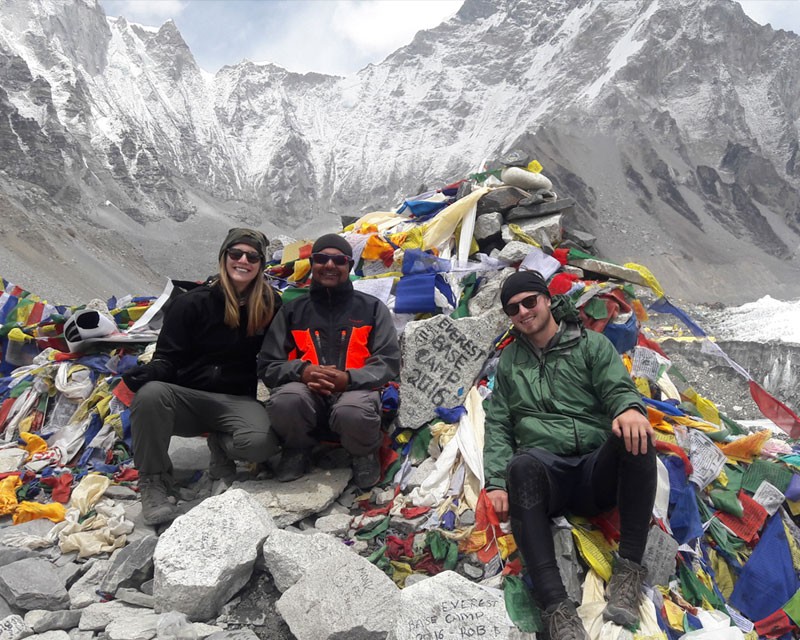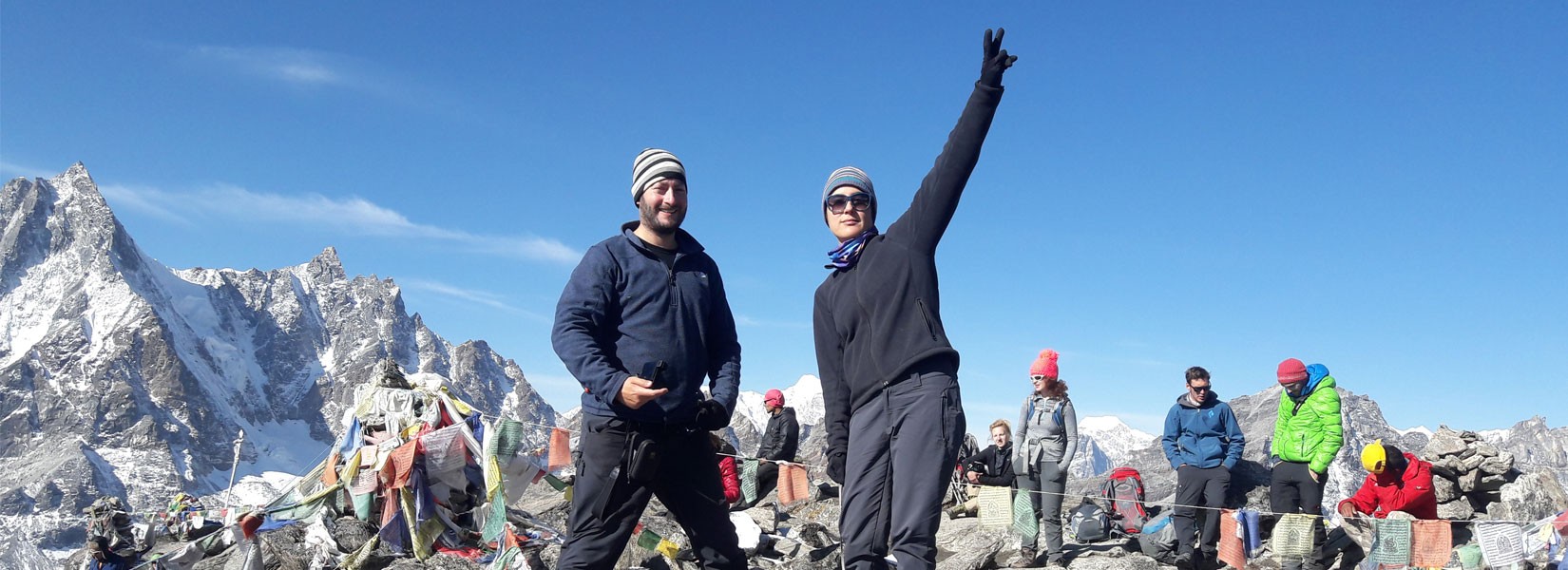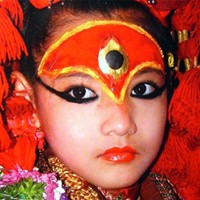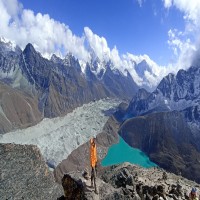1. Insurance
Travel insurance is mandatory for all clients undertaking any trip. It should provide adequate security for the full duration of the tour to cover personal injury, medical expenses, repatriation expenses, helicopter rescue and loss of luggage. Make sure that your insurance policy covers up to 2500-5000 meters of altitude.
2. Packing List
- Sunglasses
- Sun-Cream and Lip Balm with high SPF
- Hat/Cap
- T-shirt, Vests and Shirt
- Fleece/Sweater
- Fleece Jacket
- Down Jacket
- Waterproof Jacket and Trousers
- Warm Gloves
- Hiking Boots
- 3-4 pairs of socks
- Day pack (30-40 liters)
- Torch light
- Water bottle (Minimum 2 liters)
- Small Hand Towel
- Sleeping Bag for up to -15 Degree Celsius
3. Guide and Porter
We provide experienced, knowledgeable and honest guide with good communication skills in English language to make your trip wonderful. The guide will provide all the information about the mountains, different histories, cultures, traditions and many more. We will provide 1 porter for 2 people. The porters are helpful as well as strong and will carry a maximum of 25 kgs combined. After giving the best services along with the hard works up in the mountains, guides and porters expect some tips from your side. Tipping culture is very common in tourism sector.
4. Altitude Sickness
Altitude sickness, also known as Acute Mountain Sickness (AMS), is a pathological effect of high altitude on humans, caused by acute exposure to low partial pressure of oxygen at high altitude. It commonly occurs above 3000 meters. It presents as a collection of nonspecific symptoms, acquired at high altitude or in low air pressure, resembling a case of "flu, carbon monoxide poisoning, or a hangover". However, most people can ascend to 3000 meters without difficulty.
Primary Symptoms of Altitude Sickness:
- Lack of appetite, nausea, or vomiting
- Fatigue or weakness
- Dizziness or lightheadedness
- Swelling of hands, feet, and face
- Insomnia
- Shortness of breath upon exertion
- Nosebleed
- Persistent rapid pulse
- Drowsiness
- General malaise
Prevention:
Ascending slowly is the best way to avoid altitude sickness. Avoiding strenuous activity such as skiing, hiking, etc. in the first 24 hours at high altitude reduces the symptoms of AMS. Alcohol and sleeping pills are respiratory depressants, and thus slow down the acclimatization process and should be avoided. Alcohol also tends to cause dehydration and exacerbates AMS. Thus, Marvel Adventure strictly suggests avoiding alcohol consumption in the first 24–48 hours at a higher altitude.
Guides and porters from Marvel Adventure are very much familiar with this problem due to their experience. All of them are trained with basic medical trainings and hence they definitely can help you.
Explore our exclusive Everest Region packages, featuring the serene Gokyo Lake Trek, the exhilarating Three High Pass Trek, and the scenic Everest Panorama Trek. Each package is meticulously crafted to offer a unique exploration of the Himalayas, catering to varying levels of adventure and fitness.
Best Time for Everest Base Camp Chola Pass Gokyo Trek
Nothing beats the suitability of Nepal's peak trekking seasons if you are wondering about the perfect time for the Everest Base Camp Chola Pass Gokyo trek. Autumn and spring, without a doubt, offer ideal conditions for embarking on this adventurous journey.
Each part of your trekking route is affected by the seasonal changes. So, you may reconsider whether you are planning for monsoon or winter treks.
The following breakdown helps you identify the best time for the trek depending on the conditions of the route:
Autumn: Popular and Ideal
Autumn stands out as peak trekking season in Nepal for a reason. It creates a perfect blend of nature and adventure. The weather is consistent, creating trails that are comfortable for walking. That is why it is regarded as an ideal and popular time to trek to Everest Base Camp and Gokyo via Cho La pass.
Stable weather is one of the features of this season, which extends from September to November. This means there is little or no rain for several days in the trek route. You can experience sunny conditions most of the time. The temperature is moderate without extreme fluctuations. Also, there is no risk of sudden storms.
All these factors contribute to dry trails. They are easy to walk on as compared to monsoon trails that tend to be wet. The views of Everest, Kala Patthar and Gokyo Ri are very clear. Equally clean are the skies above high mountains. These conditions are ideal not only for walking and enjoying, but for photography, too.
Cho La Pass is a challenging point of this trek and snow cover is one of the reasons for this. Yet the snow is less than in winter, allowing for a comparatively easier trek. Nonetheless, you need to be careful of slippery icy patches. Even then, the high pass is manageable for trekkers provided they have the right equipment and guidance.
Spring daytime is pleasant for walking as it is neither too hot nor too cold. Be careful to stay warm in chilly mornings, evenings and nights.
Despite a few challenges, autumn is recommended as the best time for undertaking this trek.
Spring: Beautiful and Rewarding
The perfect time for the Everest Base Camp Chola Pass Gokyo trek is spring if you love colorful landscapes and fresh mountain air. Temperatures are also comfortable for hiking during the daytime.
The routes are filled with hues of beautiful flowers. The lower sections of the trail between Lukla and Namche come alive in hues of red, pink and white rhododendrons.
Likewise, visibility is usually good due to clear skies. Despite occasional afternoon clouds, you won’t miss magnificent views of Everest along with Lhotse and Ama Dablam.
The daytime temperatures below 4,000m are neither very hot nor very cold. They are just right for trekking. But temperatures drop significantly during the night and early mornings in places like Gorakshep, Lobuche and Gokyo. Expect the temperature to drop below freezing.
March can see snow and ice in Cho La Pass. But the snow starts to melt by late April and May. This makes it easier to traverse the high pass.
While autumn is the busiest time of the year, spring is comparatively less busy. So, the trails are quieter than in autumn.
However, spring is no less of a trekking season in Nepal. So, if the Everest Base Camp Chola Pass Gokyo trek is on your radar, spring is the second-best and recommended season.
Winter: Peaceful but Harsh
Winter trek to Everest Base Camp and Gokyo via Chola Pass is for you if you are looking for peaceful trails. But with peace comes harsh weather conditions, demanding proper cold gear and strong fitness from the trekkers.
As the temperatures can fall below -15°C at higher altitudes, the daytime can feel extremely cold. Wind chills are regular. The nights are freezing.
Not many dare to brave such weather, which is why the trails are nearly empty in December, January and February.
One of the main destinations of this trek, the Cho La Pass, is a challenge to cross. You should not attempt to cross the pass without proper gear and experience. There are chances it might remain closed due to snow.
The other limitation of this season is that teahouses around Gokyo and the pass tend to shut down. It might create difficulties in arranging for logistics.
However, this time is best for getting clear views of the mountain landscapes and their surroundings. You can enjoy nature in its best form in solitude.
Monsoon: Rich but Unpredictable
It is a rewarding experience to walk amidst greenery, exploring nature’s richness. Monsoon offers the chance for the trekkers heading to Everest Base Camp, to Chola Pass, to Gokyo. But that comes with the challenge of difficult weather conditions.
The lower Khumbu transforms into a green valley in June, July and August. It is a rewarding experience to enjoy greenery accompanied by blooming flowers.
However, these features come with certain risks, like heavy rain and mud. The trails become slippery. The likelihood of landslides increases in the lower sections of the trail.
Leeches are common in lower forested areas following the rain. The rain and clouds lead to poor visibility. You may not be able to see Everest for days, missing the most important view of the entire trek.
If you are ready to face all these odds, then you can go ahead with this trek with the necessary preparations.
How Difficult is the Trek?
This trek combines three different destinations - Everest Base Camp, Cho La Pass and Gokyo. The individual trekking to these three places has their own difficulty level. But once they are combined as a package, it becomes one of the challenging journeys in the Khumbu region. Yet with the right preparation, it is an achievable goal.
The Everest Base Camp Chola Pass Gokyo trek has been graded as ‘very strenuous’. That is because you need to trek to high altitudes above 5,000m. The route ascends from Lukla at an altitude of 3,800m and then goes over 5,500m.
For instance, Kalapatthar is at an altitude of 5,545m. You need to reach 5,420m to reach Cho La Pass. Gokyo Ri is at an elevation of 5,357m.
As such, the altitude gain is also significant. The oxygen level is also significantly lower at high altitudes. So, trekkers must plan acclimatization days mandatorily. Otherwise, there is a chance of suffering from altitude-related conditions such as Acute Mountain Sickness.
Likewise, the terrains are not easy to traverse. You need not use any climbing equipment in this trek. Yet you can’t avoid hiking through steep and rocky sections. If there is ice or snow on the trail, then crossing Cho La pass can feel technical. Therefore, you might have to use microspikes or crampons in some cases.
On average, the trekkers walk 5-8 hours a day as part of this journey. A few days might require you to walk for 9-10 hours. The daily effort demands endurance and stamina to keep on going.
What adds to the trek's difficulty is the inconsistent mountain weather. It changes quickly. Snowstorms and wind chill are common in peak seasons, too. This can make your trekking experience difficult.
Requirements for the Trek
The Everest Base Camp Cho La Pass Gokyo trek is a challenging journey that takes you above 5,000m. Hence, a solid preparation is essential to participate in this adventure.
You must be an experienced trekker to join this trek. In addition, you require physical fitness and mental strength. Equally important is to train yourself to develop your overall trek capacity.
Below are some suggested preparations:
Who should attempt it
Some of the basic qualities that the trekkers must possess to succeed in this trek are a good fitness level and prior trek experience. Fitness in this sense is the ability to walk a minimum of 6-8 hours per day carrying a backpack. If you are this fit, the trek is for you.
The other criterion is experience. Trekkers must have walked over 3,500m in the past. It should be a part of a multi-day trek at altitude. Only then are you able to adapt to high altitudes.
Furthermore, you must be confident to traverse through difficult terrain both mentally and physically. The reason is that rocky, uneven and icy terrain is a part of this trek. You are unable to avoid them on this trek. So, you need to prepare accordingly.
Who should avoid it
The trek is not suitable for those new to trekking and do not possess any experience at all. Trekking is fun, but traversing above 5,000m is a serious business. A slight mistake can cost your life. Thus, you do not know what to expect and how to deal with challenges during the trek without prior experience.
Anyone with a serious heart or respiratory issue might also not be suitable for this trek. One should consult their physician before joining the trek if they have such health issues.
It is also a no for those who are not prepared for challenging trails and the cold temperatures of the mountains.
How to prepare for it
Prepare yourself both physically and mentally if you wish to be a part of the Everest Base Camp Cho La Pass Gokyo trek. Mental and physical strength and endurance make the trip safe, successful and enjoyable.
You can prepare in the following ways:
Cardio Training
Cardio training improves endurance, so that you are not tired quickly during the trek. It enhances lung capacity. It helps your lungs tolerate thin air at high altitudes. The increased high efficiency ensures better oxygen circulation even when the body is under stress.
You can obtain good cardio fitness through hikes and long walks. Regular walks carrying a loaded backpack are the way to do so. Stair climbing, cycling and swimming are also suggested.
Strength Training
Strengthen your legs and hips with exercises like squats and lunges. Core exercises like planks and bridges improve stability. These trainings help you during deep ascents and descents. You can also navigate rocky and slippery sections with ease.
Strength training avoids the quick fatigue of muscles. It prevents falls by helping you maintain balance when walking. Stronger muscles protect your knees from getting injured
Mental Training
The trekking days are long and tiring. You face discomfort from cold and fatigue. Fear and anxiety are common when crossing difficult areas like the high passes.
A proper mental training helps you deal with these situations. For that, learn to practice focusing on small goals when simulating trek conditions during physical training.
For instance, when you are on long hikes as a physical preparation for the trek, tell yourself, ‘I will just reach that next bend and rest. I won’t give up here.’ This mentality helps later in the trek.
Likewise, visualize yourself reaching each milestone like Everest Base Camp, Cho La Pass and Gokyo. It helps make the seemingly impossible goal attainable.
Also, prepare yourself to face discomfort during the trek. Yet that is temporary and just a part of the adventure.
A strong mentality makes you resilient to harsh conditions. That ultimately ensures the success of the trek.
Permit Checklist
Marvel Adventure assists you with the permits required for the Everest Base Camp Cho La Pass Gokyo trek. But since you are the one who is actually traversing the area, you need to understand what they are and why they matter.
You will require:
Sagarmatha National Park Entry Permit: This permit is essential to enter Sagarmatha National Park. It is a UNESCO World Heritage Site. Once you obtain this permit, you can trek to the entire Everest region. This includes the Everest Base Camp, Cho La Pass and Gokyo Valley.
Pasang Lhamu Rural Municipality Entry Permit: It is a permit issued at the local level. It is necessary to enter the area of Pasang Lhamu Rural Municipality. Its territory begins as soon as you land in Lukla from your aircraft.
Lodging and Dining Along the Trail
You will spend nights at locally-run lodges and teahouses along the Everest Base Camp Chola Pass Gokyo trek. They offer basic lodging facilities along with nourishing meals for the trekkers.
Here is what you can expect:
Rooms and Facilities
The teahouses and lodges provide basic bedding. They include a pillow, a mattress and a blanket. Communal dining rooms offer heating facilities. They are usually heated with a stove fueled by yak dung. But the rooms are not heated. So, bring a winter-rated sleeping bag to stay warm at night, especially in Lobuche, Dzongla and Gokyo among other places.
Lodges from Lukla to Namche are better-equipped, with some even offering attached bathroom facilities. Shared toilets are a feature of places above that.
Meanwhile, the lodges are very basic in Dzongla and Dragnag. In Gokyo, they are smaller than in other places. They can fill up quickly in peak trekking season. So, you should make reservations in advance and remain on the safe side.
You can charge your device after paying a certain amount throughout the trek. To deal with a limited power supply in higher altitudes, you should bring a power bank.
Expect for basic squat toilets. There can be simple Western-style toilets, too. But rather than faucets, you will get buckets of water. It is advised to bring toilet paper if you can’t do without it.
Food to Eat
The trekking route features basic but filling meals. Most teahouses have a similar kind of menu. Generally, you are provided with breakfast, lunch and dinner.
For breakfast, they serve Tibetan bread or chapati with jam or honey. They also provide porridge, muesli, eggs and tea or coffee.
Lunch and dinner are mostly similar, comprising dal-bhat, fried noodles, fried rice, momos and pasta.
Potato-based dishes are commonly available as the locals cultivate it here.
You can also find drinks, including lemon tea and hot chocolate, among other beverages.
But bring your tea bags and instant coffee if you want to enjoy the flavors of your home. Snacks like nuts are high in calories and offer a pleasant change of taste.
Responsible Trekking
Trekking through the Everest region means being on one of the busiest trek trails in the world. Every year, this region welcomes thousands of visitors. This can result in the deterioration of the fragile mountain environment if trekking is not done responsibly.
As a trekker, you should also contribute to the protection of the environment. Proper waste management, therefore, should be your priority.
Always pack and take with you what you bring in to dispose of in the right place. This includes plastic wrappers, sanitary waste, as well as used batteries.
Also, avoid buying bottled water whenever possible. Instead, opt for reused water bottles.
Likewise, respect local culture and people. Stay on marked trails. Avoid damaging vegetation. Do not disturb wildlife.
Being a responsible trekker is the key to keeping the beauty and features of the Everest region intact.
Everest Base Camp or Gokyo: Why Not Choose Both?
Many trekkers choose the standard Everest Base Camp trek only. Others opt for the trek to Gokyo Valley only. So, it is obvious for you to question which one is better.
Both are great options for trekking, offering a unique experience in the mountain trails of Nepal.
Yet rather than choosing one destination, we advise you to combine both places and be a part of a comprehensive trekking experience. As such, you can enjoy the features of both destinations, connected by the adventurous Cho La Pass.
The following comparison table shows why you should choose the combined options of trek to Everest Base Camp and Gokyo via Cho La Pass:
Comparison Table
Trek Routes | Features |
Everest Base Camp Trek | Trek Duration: 12 days Route Highlights: Everest Base Camp, Kala Patthar, Tengboche Monastery Trip Difficulty: Moderate Crowds: Busy |
Gokyo Valley Trek | Trek Duration: 10 days Route Highlights: Gokyo Lakes, Gokyo Ri, Ngozumpa Glacier Trip Difficulty: Strenuous Crowds: Quieter |
Everest Base Camp Cho La Pass Gokyo Trek (Combined) | Duration: 14 days Route Highlights: All landmarks seen during the Everest Base Camp and Gokyo Valley treks along with Cho La Pass Trip Difficulty: Very strenuous Crowds: Less crowded after Everest Base Camp |
The above table presents three trekking options in the Everest region and explains the differences.
The classic route of the Everest Base Camp trek offers a close-up view of Everest, sunrise from Kalapatthar along with Khumbu Icefall. But it is one of the busiest trekking trails.
The Gokyo Valley trek, on the other hand, has peaceful trails. You can see turquoise Gokyo Lakes, ascend Gokyo Ri and enjoy the Ngozumpa Glacier, too. This part of the journey does not require you to hike to the Everest Base Camp.
But if you want to experience all the aforementioned highlights, the combined route via Cho La Pass is the best option for you.
The Everest Base Camp Chola Pass Gokyo trek first takes you to the Everest Base Camp and then to Chola Pass before exploring the Gokyo Valley. It is more challenging yet rewarding. This is because with the addition of a few more days in your itinerary, you can experience the greatest variety of the Everest region.
FAQs About Everest Base Camp Chola Pass Gokyo Trek
How many days do I need to complete the Everest Base Camp Chola Pass Gokyo trek?
The itinerary designed by Marvel Adventure takes 14 days round trip from Lukla, depending on acclimatization days and weather conditions.
Is the Cho La Pass very difficult to cross?
Yes. It is one of the most difficult sections of the entire trek. You need to trek through a steep and icy section of the trail. The loose rocks make both the ascent and descent challenging. You must be physically fit and experienced to succeed in crossing this high pass.
How high do I ascend on this trek?
Kalapatthar is the highest point you reach. It is at an altitude of 5,545m.
Is a prior trekking experience mandatory?
Since it is a challenging trek, a prior trekking experience in high altitude is recommended. Beginners with no experience should not consider this option.
Do I need to train for this trek?
Training is essential to deal with the challenges you face during the trek. There is no particular duration of the training period. But it is better if you start at least a month before embarking on this trek.
Is winter trekking from Everest Base Camp to Gokyo via Cho La Pass possible?
It is possible for experienced trekkers with the right cold gear and caution. Otherwise, this trek is not recommended for winter. There is heavy snow accumulation in Cho La Pass in winter and it can be dangerous.
Can I get a guide and porters for this trek?
You can hire both guides and porters by paying them daily wages. But remember to hire trained and licensed guides only.
Is this trek worth it than the individual treks to Everest Base Camp or Gokyo Valley?
This trek combines two different routes that take you through Cho La Pass. You can enjoy the perks of two journeys in one with the addition of a few more days in your itinerary. This enhances your overall trekking experience.
Do I need to buy travel insurance beforehand for this trek?
It is compulsory to get travel insurance before embarking on the Everest Base Camp Chola Pass Gokyo trek. The insurance should cover bills of your medical treatment, emergency evacuations and expenses of such other unforeseen circumstances.
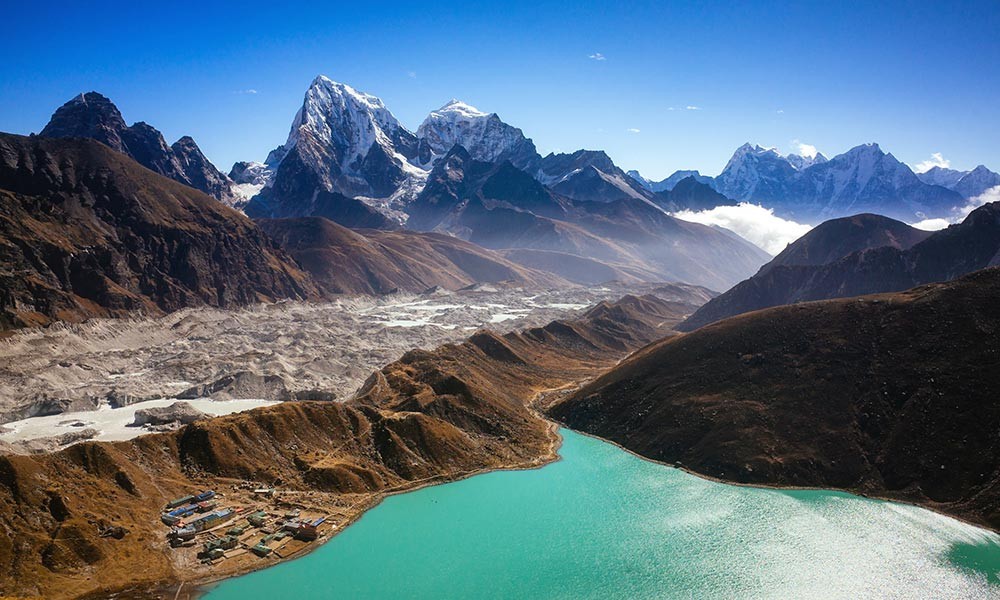 Everest Base Camp-Chola Pass-Gokyo Trek is an adventurous trek in the Khumbu region. Everest Base Camp and Gokyo valley are the destinations of this trek via technical Cho La Pass.
Everest Base Camp-Chola Pass-Gokyo Trek is an adventurous trek in the Khumbu region. Everest Base Camp and Gokyo valley are the destinations of this trek via technical Cho La Pass.